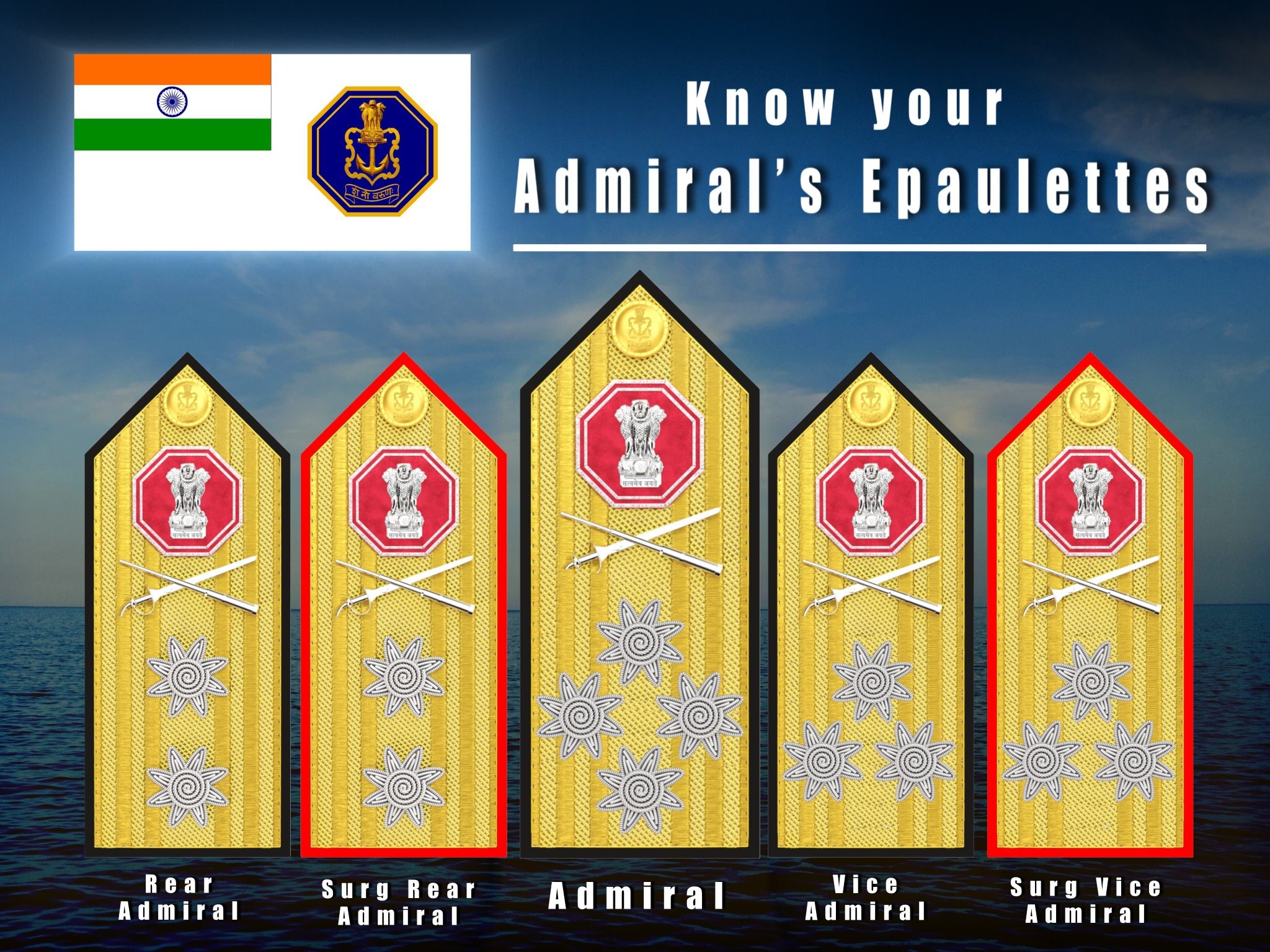New Delhi, December 30: The Indian Navy has introduced a newly designed set of Admirals’ epaulettes, taking inspiration from the legacy of Chhatrapati Shivaji Maharaj. In a move reflecting pride in Indian heritage, Prime Minister Narendra Modi announced the alignment of Indian Naval ranks with traditional Indian nomenclature.
The shoulder epaulettes indicating an officer’s rank were unveiled after Modi’s announcement earlier this month. Speaking at the Navy Day celebrations in Sindhudurg, Maharashtra on December 4, Modi expressed satisfaction that the epaulets will now showcase the heritage and legacy of Chhatrapati Shivaji Maharaj.
The new design replaces the ‘Nelson Ring’ of the British Raj with the royal seal of the Maratha ruler. The octagonal design symbolizes the eight directions, reflecting the all-encompassing long-term vision of the Army. It has a sword representing the navy’s objective of winning wars through dominance and overcoming challenges, and a telescope symbolizing vision, foresight and vigilance in a changing world.
As we usher in the new year #2024, #IndianNavy proudly unveils the new Design of Admirals’ Epaulettes. Announced by @PMOIndia during #NavyDay2023 at Sindhudurg – the 🛑 in the new Design, drawn from the Naval Ensign & inspired from Rajmudra of #ChhatrapatiShivajiMaharaj, is a… pic.twitter.com/Ssxq8ZLOZd
— SpokespersonNavy (@indiannavy) December 29, 2023
The change also extends to the ‘sailor ranks’ of the British Raj, affecting over 65,000 sailors who will now receive a new rank.
Previously, naval flags featured the Red Cross symbol, St. George’s Cross, the insignia of a Christian saint and warrior from the British flag (the Union Jack). The recent changes echo similar uniform adjustments in the Indian Army, where officers of brigadier rank and above now wear standardized uniforms, emphasizing a common identity and reflecting the ethos of the army.
The move marks a break from the traditional practice of different regiments and services wearing different uniforms and equipment. Notably, the change in epaulettes is in line with a broader trend in the Indian Armed Forces to adopt a unified and representative identity for its senior officers.




